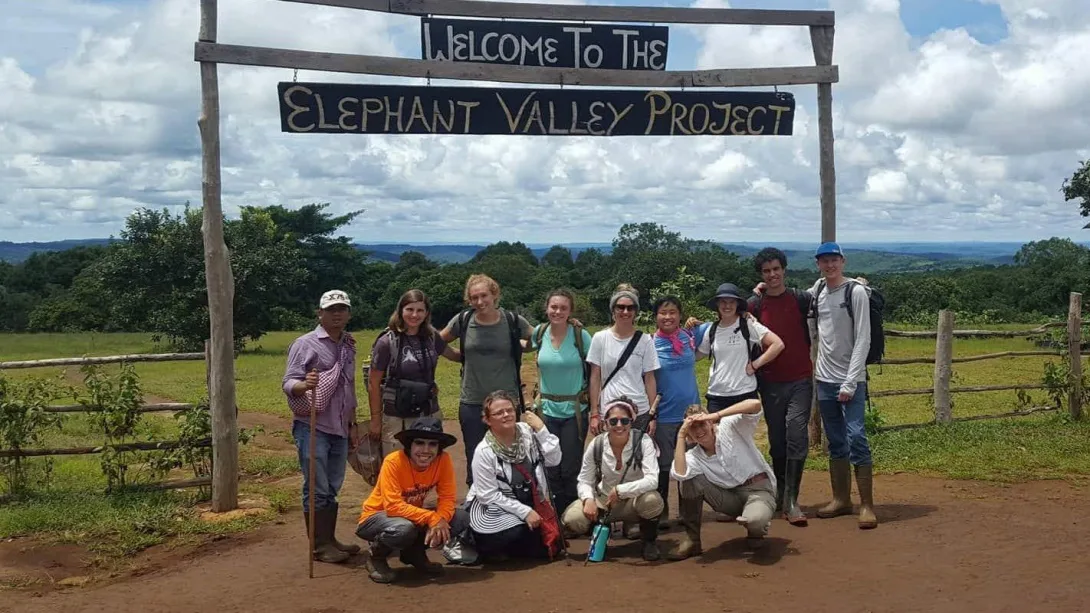Rain, Red Mud, Lush Forests, and Elephants!
Late last month we visited the highlands of Modulkiri – a province largely covered by wildlife sanctuaries. Here students had the opportunity to learn about the indigenous Bunong people and their culture, as well as visit the Elephant Valley Project (EVP) where we will conduct part of our Directed Research later in the semester. The EVP will also be our base for part of the Cambodia Summer program in 2018.
During our visit students spent the morning learning about the NGO that runs EVP, Elephant Livelihood Initiative Environment (E.L.I.E), from the manager, Jemma Bullock (Picture 1). This organization is helping to give elephants that have previously worked in tourist camps and logging industries a life in a natural setting. At EVP tourists stand back and observe natural behaviors. E.L.I.E also contributes to providing an income and financial support both to the Bunong people who work at EVP and to the Bunong families that live in the nearby village of Pu Trom.

Manager Jemma Bullock (left) explaining the goals and initiatives of the project to SFS staff and students. Photo courtesy of Elephant Valley Project
In the afternoon we observed the elephants in the evergreen forest. Students learned how to collect behavioral data using continuous and interval sampling methods (Picture 2), giving them a taste of what to expect for Directed Research later in the semester where students will use interval sampling to collect foraging behavior data within different habitat types. This sampling method will allow students to identify priority food plants in the elephant diet in both evergreen forest and mixed dipterocarp forest. This topic has not been explored systematically in Cambodia and by gathering this information, not only will we develop our understanding of the dietary preferences of elephants in EVP, but we can use this information to inform forest restoration projects, or corridor development projects connecting fragmented forests, of plant composition required to attract wild elephant use. Understanding the preferred food plants of elephants can also contribute to knowledge of crop-raiding incidences in Cambodia and preferred plants could potentially be incorporated into buffer zones surrounding areas of human-elephant conflict. After collecting some data we then sat in the light rain to watch the elephants bathe in the river (Picture 3) and spray themselves with mud before they wandered into the forest.

Students learning behavioral observation sampling techniques. Photo courtesy of Peter Wedell

Quietly observing the elephants in the river. Photo courtesy of Anna Chahunea
Observing the elephants in the forest, students were taught about elephant health and welfare. Following the hike through the hilly jungle terrain, we had the late afternoon to relax at the base camp with volunteers at the project. That night, falling asleep to the sounds of the jungle all around us was absolutely beautiful. I can’t wait to get back there for more data collection!

Returning from the morning hike ready for a delicious lunch! Photo courtesy of Jemma Bullock
Related Posts

Camila Rojas: Alumni Spotlight⭐

